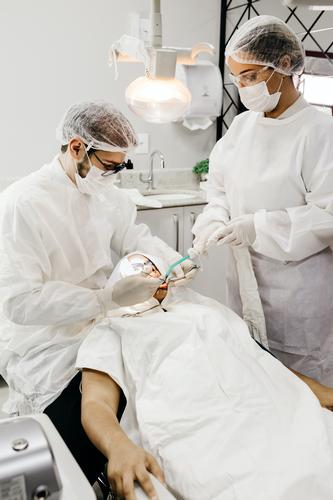Dentistry has always been recognized as a profession with high standards of Hygiene and Decontamination. One of the mandatory continuous professional development (CDP) subject required every year from the General Dental Council to maintain the standards of care and the dentists registered and able to practise is “Decontamination and Infection Control”. Therefore, the profession is well accustomed to prevent any infecto-contagious diseases from spreading in the dental environment.
The main advice regarding dental procedures during the COVID-19 pandemic is related to the use of any dental equipment that generates aerosol, like drills, ultrasonic scalers used to remove tartar and the air/water syringe used to wash and dry the teeth and soft tissues. The government guidance states that aerosol generating procedures (AGP) should be preferably avoided, but if not possible, full PPE (including the FFP3 masks used at hospitals to treat COVID-19 patients) must be worn. Also, an important piece of kit called dental rubber dam will make a huge difference in reducing the virus load present in the saliva. I will write more about this subject on my next blog. After the clinical dental procedure is completed and the patient discharged, it will take from 30 to 60 minutes for the surgery to be effectively decontaminated, to make sure all the surfaces in the clinical room are virus particles-free, before the next patient can be admitted. So, whenever possible, dentists can use two different surgeries to reduce the waiting times and increase the number of patients treated at each session, without compromising the safety of dental staff and patients. It will take the Dental Practices a lot of planning, to adapt to this new context. We have the right tools and knowhow to make it happen.



